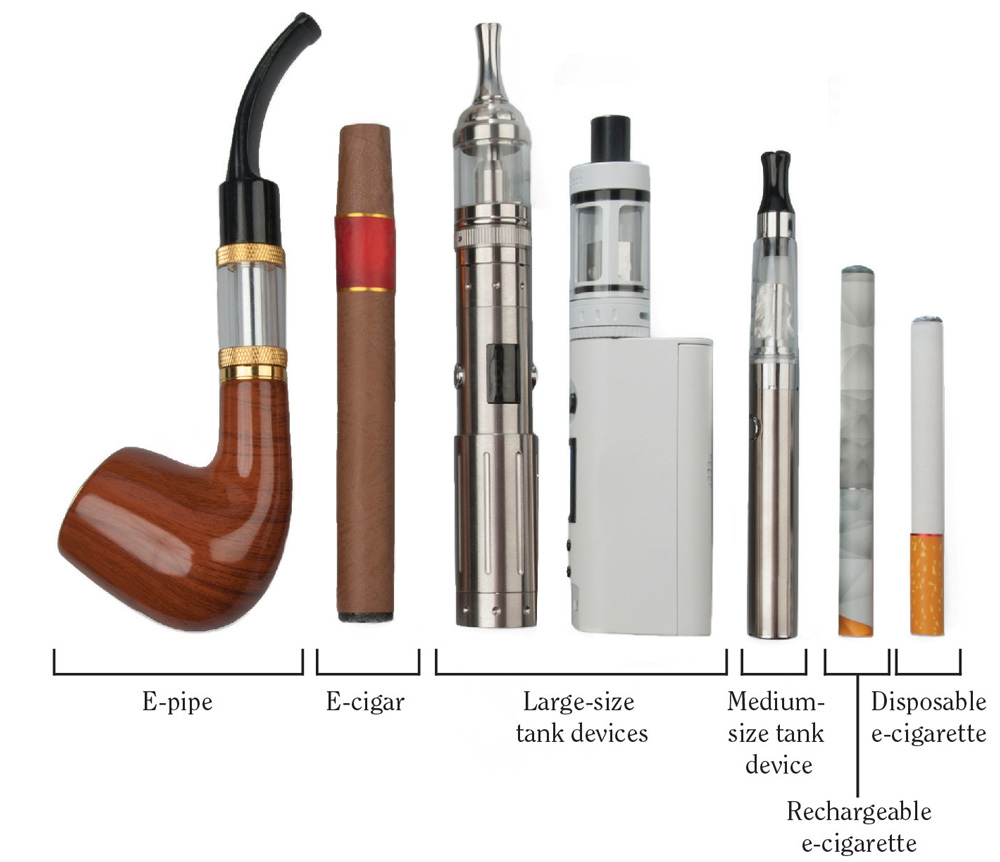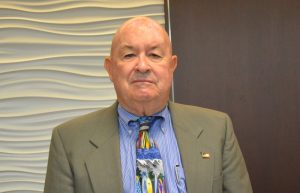
Last Updated: Wednesday, 10:23 a.m.
The Palm Coast City Council this evening is expected to pass an ordinance that will ban the sale of vaping products to anyone under 21 and regulate other aspects of e-cigarette sales as concerns about the products’ harms to health, its addictive capacities and the lack of regulation applying to minors has yet to be addressed in state law.
Both the state’s proposed law and Palm Coast’s ordinance may be moot, however, since in late December President Trump, through a spending bill he signed, gave the Food and Drug Administration the go-ahead to raise the legal limit to buy all tobacco products, including e-cigarettes, to 21. The rule will apply across the nation. “It is now illegal for a retailer to sell any tobacco product — including cigarettes, cigars and e-cigarettes — to anyone under 21. FDA will provide additional details on this issue as they become available,” the statement by the FDA said.
Council member Jack Howell pressed for the ordinance and on Jan. 21 got the council to slate it for a workshop discussion “so we can finally wrap our arms around this plague.” That discussion took place last week. Absent surprises, tonight’s vote on first reading is more of a formality.
City Attorney Bill Reischmann said there are no regulations of tobacco in Palm Coast ordinances. That role is preempted by the state. But vaping is not so preempted, because “it’s not considered smoking” from the state’s standpoint, Reischmann said, “because it’s not a tobacco product.” He said it may be a matter of “policy versus common sense,” but that leaves the door open for the council to step in.
The ordinance prohibits the sale of vaping products to anyone younger than 21. It allows the city to prohibit exhibiting or marketing vaping products in a store where anyone can pick up the product. Like cigarettes or porn, the product must be behind a store counter, accessible only by a store clerk, and may not be dispensed through self-serving machines. The ordinance also prohibits vaping anywhere smoking is prohibited–that means all public properties, including public parks, and places such as restaurants, cinemas, offices and the like.

“Within our county, we’re going to take the lead on this, and I hope that the other cities will copy our ordinance,” Howell said. “It’s time, because this thing is like the flu, it starts growing and growing and growing and then it’s really a health issue.” Two bills are pending in the Florida Legislature to regulate vaping products. Because of those,
Council member Eddie Branquinho recommended waiting on the Legislature, for the next two months, before acting. “Who’s going to enforce it? Remember, we’re going to need personnel to enforce it,” he said. “The best way to stop this thing, this sales to minor, is stings.” He said the city doesn’t have the means of enforcement, while minors could go to Bunnell or Flagler Beach to buy vaping products. (The Boston Globe reported that when Massachusetts banned vaping products altogether last October, vaping business started booming in Maine and New Hampshire. But that was before the federal rule kicked in. In Flagler Beach, ERic Cooley, a Flagler Beach city commissioner who owns the 7-Eleven on State Road A1A, said the store has been following the new rule for weeks, and that Palm Coast’s or the state’s proposals may be moot.)
The proposed ordinance says nothing about penalties.
“We don’t have code enforcement right now going out and enforcing underage smoking,” Mayor Milissa Holland said. “That’s not what our code directors do, so I don’t see us now assuming that cost, because this ordinance is adopted. I think it’s really–just for me, my opinion–is bringing up current an ordinance of law that will align with the same as smoking products, tobacco products. This is a tobacco product, it’s just utilized in a different way.”

In fact, it is illegal to sell tobacco products to minors younger than 18, and doing so is punishable as a second-degree misdemeanor: it’s a law enforcement issue. Selling vaping products is not punishable by law. Since it is not a state law yet, in Palm Coast it would be a code enforcement issue, differently than it is with tobacco products. And in fact Palm Coast’s proposal goes further even than existing tobacco laws: it prohibits sales to anyone younger than 21, not 18. It is already illegal to smoke or vape within 1,000 feet of school property between 6 a.m. and midnight. The penalty is a civil infraction carrying a $25 fine or completion of a school-approved anti-tobacco or anti-vaping program. Sen. David Simmons, whose district includes Volusia and Seminole counties, introduced a bill that would increase the minimum legal age to buy vaping products to 21 and maintains the 1,000-foot prohibition around schools, but applies the prohibition 24 hours. It has sailed through two committees so far. Sen. Debbie Mayfield, the Brevard Republican, introduced a somewhat weaker bill which has so far not advanced.
“Any time we can get ahead of legislation,” Holland said, “is a good thing.”
“The city has an ordinance,” Howell said, his present tense projecting tonight’s action. “Parents will be aware of this. Store owners will be aware of this. If we get consistent complaints that a store owner is not abiding by our ordinance, then, I think it would be appropriate for code enforcement to go over and say hey, you know, what’s going on here? We’ve got several complaints of you people doing this and that, and it’s in violation of our ordinance.” Howell said some national chain businesses are removing vaping products from their shelves, among them Walmart.
Branquinho again and again returned to his objections until Holland rather forcefully shut him down at a point in the discussion when it was obvious the council was aligned behind the proposed ordinance.

“Here’s the deal,” Holland said. “I hate sitting around having conversations on what Tallahassee will do, because we never know what Tallahassee is going to do, and it is a source of frustration for me because if we have a moment that we can help design and craft what’s good for our community, then I don;t want to sit here and go what if. Tallahassee is like a wild, wild west, and by the end of session, only 14 percent of bills that are actually introduced at the beginning pass. Only 14 percent. And those 14 percent, those bills are vastly different than when they’re first introduced. That’s exactly what happened. So if anything, we’ll amend the ordinance to be consistent with it. That’s all. Very clear, very easy. It’s not complicated.” Tobacco smoking has declined significantly over the years among youths and young adults, but vaping has erased much of those gains.
“E-cigarette aerosol is not harmless,” the Centers for Disease Control states. “It can contain harmful and potentially harmful constituents, including nicotine. Nicotine exposure during adolescence can cause addiction and can harm the developing adolescent brain.”
According to a brief history by the CDC, the earliest version of an electronic cigarette dates back to a patent application filed in 1963 by Herbert Gilbert. It was patented two years later as a “smokeless nontobacco cigarette,” heating moist, flavored air. It did not get far. An alternative, non-burning cigarette called the Favor was introduced in 1986. But the first E-cigarette was developed in 2003 by Hon Lik, a pharmacist and a former deputy director of the Institute of Chinese Medicine in Liaoning Province. Chinese investors backed his patent and in 2004 the Ruyan e-cigarette hit the Chinese market, appearing in the United States shortly after that: Ruyan gained a U.S. patent in 2013, and was bought out the same year. By the middle of the last decade, China controlled 90 percent of the e-cigarette market. By 2014, the consumption of e-cigarettes surpassed tobacco products among youths.
A briefing memo to Palm Coast City Council members ahead of this evening’s meeting states that “According to the Centers for Disease Control and Prevention (‘CDC’), the number of middle and high school students who reported being current users of tobacco products increased 36%—from 3.6 million to 4.9 million students—between 2017 and 2018.” (The memo doesn’t define “current,” though the CDC does: it’s at least one use of a tobacco product in the previous 30 days. (The memo misstates some figures.)
The CDC and the Food and Drug Administration reported last year after releasing their survey that “the number of U.S. high school students who reported being current e-cigarette users increased 78 percent between 2017 and 2018 to 3.05 million (or 20.8 percent). Numbers among middle school students rose 48 percent to 570,000 (or 4.9 percent).”
The city’s memo did not include other key, less alarming–and more reassuring–numbers from the same survey, numbers that tend not to make media reports because they are not quoted in the CDC’s or the FDA’s own releases: only 6 percent of respondents thought E-cigarettes are not harmful, 61 percent thought E-cigarettes are as addictive or more addictive than regular cigarettes (only 18 percent declared them less addictive), though 32 percent reported seeing a student using an e-cigarette in a school bathroom or locker room, and an equal number saw a student use in a school parking lot or a nearby sidewalk.
![]()




























Mike Cocchiola says
Go, Jack! Vaping is deadly. You will save young lives.
Really says
Worse than lighting up IMO